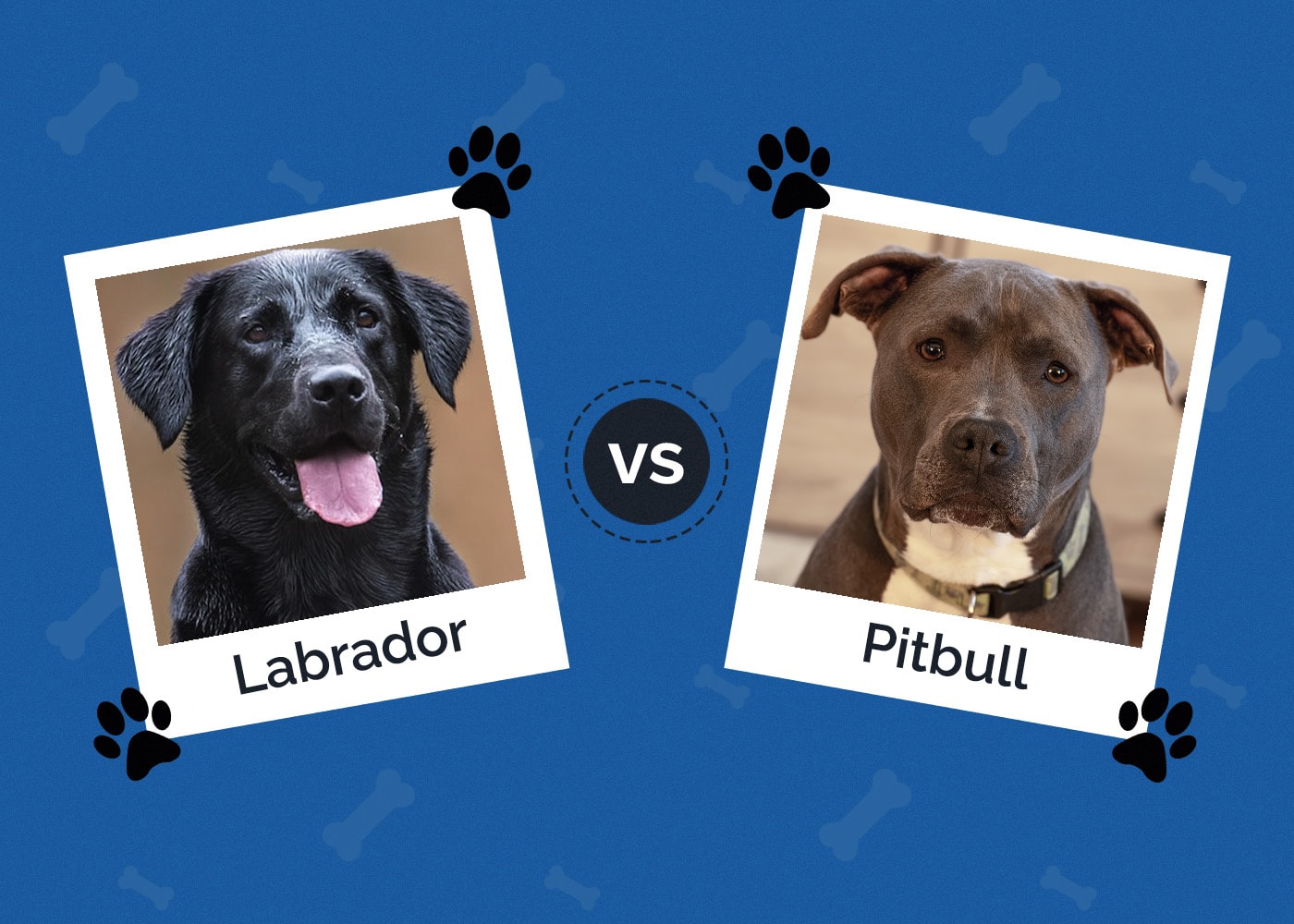Do Pit Bulls Lock Their Jaws When They Bite? Fact vs Fiction
Updated on
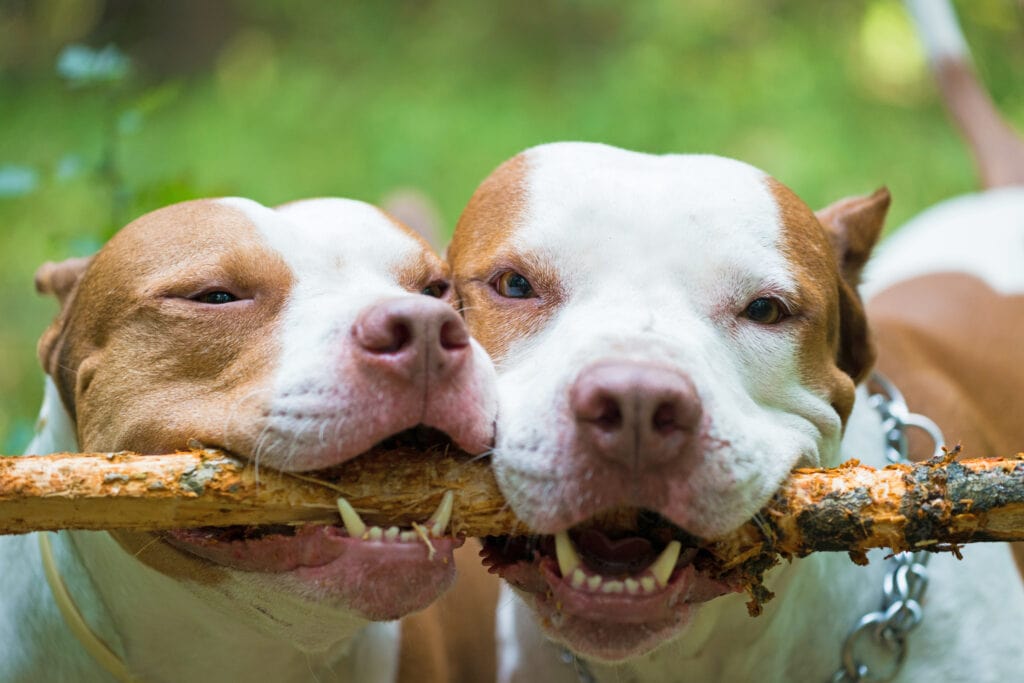
Some people think Pit Bulls are a dangerous and aggressive breed. But others know that they are loving, devoted, and energetic dogs that make wonderful family pets. Due to the controversy surrounding this much-maligned breed, several beliefs are associated with them. One is that a Pit Bull’s jaws will lock when biting something.
This is a myth! Pit Bulls have strong jaws but they do not have locking jaws.
Here, we take a closer look at the biting strength of the Pit Bull and other information to help dispel a few of the myths and fears concerning this misunderstood breed.
The Jaws of the Pit Bull
First, the Pit Bull’s jaw is no different from any other dog’s jaw. A former biology professor from the University of Georgia, Dr. I. Lehr Brisbin, stated that the Pit Bull’s skull has no distinguishable feature that would suggest that their bite is any different or more powerful than any other similarly sized breed.
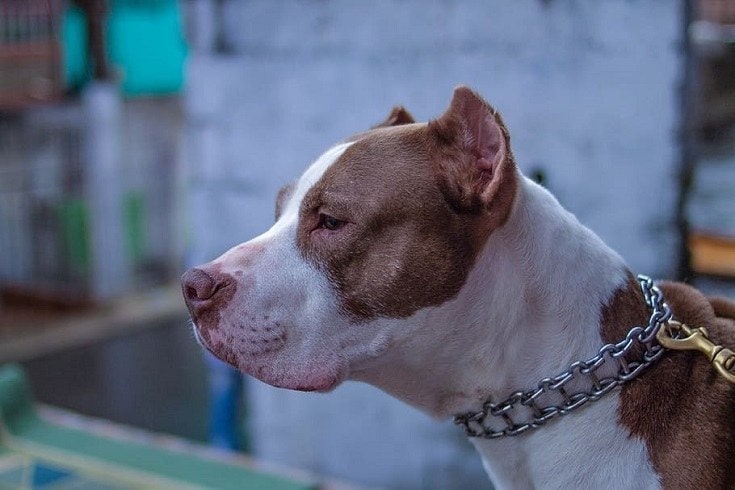
Before Discussing Bite Force
Pit Bulls have normal jaws without any kind of locking feature, but how strong is their bite force? Before we discuss this, we want to add the quick caveat that the process of measuring the bite force of dogs is quite flawed. The act of trying to get dogs to bite on a measuring device as hard as they can is challenging, to say the least!
How a dog bites will depend on what they’re biting—whether it’s a treat or a threat can make an enormous difference in how hard they bite down. One way to determine how hard a breed might bite is based on the size and shape of their head and jaw.
Here, we let you know how hard Pit Bulls can bite down, but to put it in perspective, we compare the force to that of other breeds.
The Strongest Bite Force
The dog breed measured with the strongest bite force is not the Pit Bull—it’s the Kangal. This relatively unknown Turkish breed has a whopping bite force of 743 psi! Even lions aren’t at the same level, with 650 psi. The animal with the strongest bite is the Nile crocodile, with a 5,000-psi bite force!
It might surprise you to learn that Pit Bulls don’t even make the top 10 of strong biters; they come in at number 13 with a 235-psi bite force.
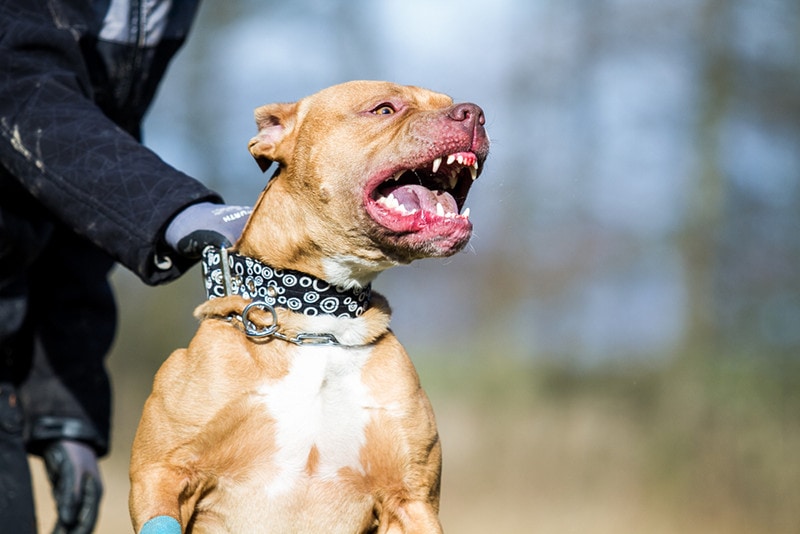
Dog Breeds Most Likely to Bite
So, the Pit Bull does have a strong bite, but it pales in comparison to that of many other dog breeds and animal species. But are Pit Bulls still an aggressive breed that is more likely to bite compared to other breeds?
Out of a list of 10 breeds, the Pit Bull is the fourth most likely to bite. The dog at the top of the list is the German Shepherd, which has a slightly stronger bite force than the Pit Bull at 238 psi.
That may sound as though German Shepherds are more dangerous than Pit Bulls. But it all comes down to the individual dog, it’s training and socialization.
Why Do People Believe That Pit Bulls Lock Their Jaws?
Part of the reason is likely that this breed already has a bad reputation for being tough, aggressive dogs. But Pit Bulls do have terrier in their blood, which makes them quite tenacious and stubborn.
Pit Bulls are typically American Pit Bull Terriers, which were originally bred for bull baiting, hence the name. This blood sport is thankfully outlawed today, but the dogs would be pitted against other animals, particularly bulls. Since bulls are powerful animals and would buck around wildly, Pit Bulls were bred to bite and hang on in order to bring them down.
Once this barbaric sport was outlawed, Pit Bulls became family and working dogs, but their reputation for grabbing and hanging onto a dangerous animal stayed with them. It’s quite likely that this is what led to the locking jaw rumor.
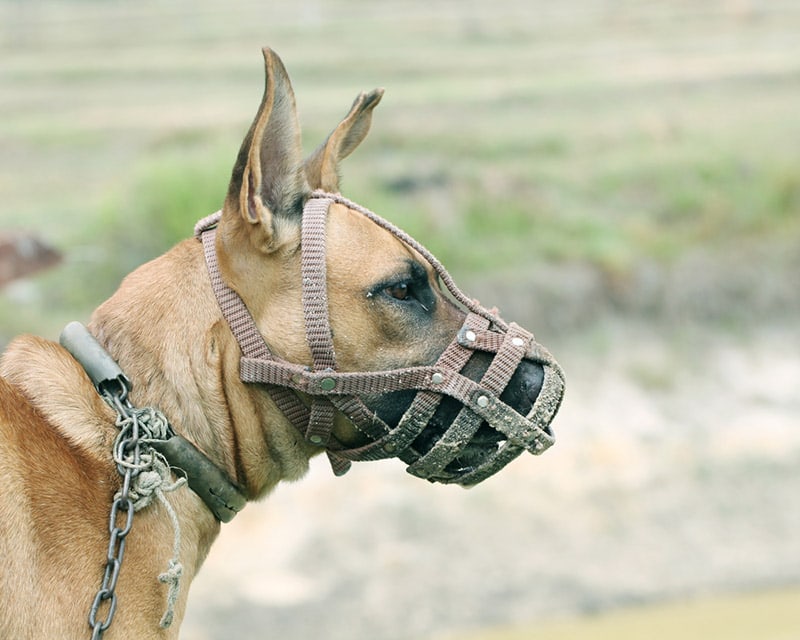
How to Get a Pit Bull to Release Their Bite
Pit Bull owners are expected to raise loving dogs that don’t go around biting everything. Having a well-trained and socialized dog is essential for avoiding any aggressive behavior. Start by taking your dog to obedience classes and other kinds of training, regardless of how old they are. Starting them young is ideal, but an adult rescue dog still needs training.
If your dog has bitten something and won’t let go of it, you can try a few tricks. A well-trained dog will release when commanded to do so, but if you’re not there yet, you can try distracting them. This can be accomplished by squirting them with water, like from a hose, which might surprise the dog into letting go. There are also break sticks, which you wedge into your dog’s mouth behind the molars, which can encourage them to release. You should not put yourself in harm’s way when dealing with dogs biting.
If your dog is simply playing and will not give you back the toy or object they have stolen you can try and offer them an alternative such as a yummy treat or favorite toy. Sometimes just ignoring the dog (if appropriate) will lead them to thinking the game has ended and dropping the toy.

Are Pit Bulls Aggressive?
All dogs have the ability to be aggressive based on their parentage, upbringing, training, and socialization. The AVMA has stated that “pit bull-type” dogs have not been identified as “disproportionately dangerous.”
Pit Bulls are just like any other dog, and each is an individual. There are multitudes of responsible Pit Bull owners out there who have raised dogs that are friendly, social, and loving.
 Conclusion
Conclusion
With the right kind of socialization and training, dogs can become wonderful pets and learn when to “let go” when biting something.
Pit Bulls do not have the strongest bite force among dog breeds, and they do not lock their jaws when biting down on something. Their determination, stubbornness, and ability to bite, hang on, and shake are all likely reasons that this myth has persisted.
Just be sure to teach your dog to release upon your command, particularly if they’re in the terrier family. Be sure to speak to your vet, and consider hiring a professional animal behaviorist or trainer if you and your dog need extra support.
Related Read:
- When Do Pitbulls Stop Growing? Everything You Need to Know!
- How Long Are Pitbulls Pregnant? Vet-Approved Facts
Featured Image Credit: YouraPechkin, Shutterstock


 Conclusion
Conclusion